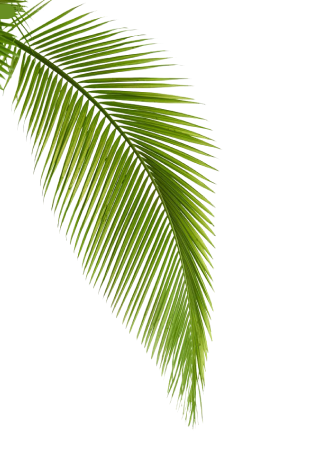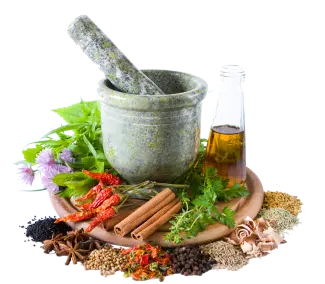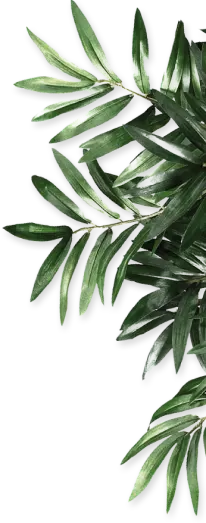Frequently Asked Questions
Find answers to common questions about our Ayurvedic treatment and training programs.
- The main focus of ayurveda is to maintain the health of healthy person and then cure the ill person.
- There are many treatments in the Ayurveda for rebalancing health.
- They include:
- Lifestyle changes like going to bed at a regular time
- Diet changes like eating more warm foods or oils or greens
- Herbs – in many forms, loose powder, capsules, teas, medicated ghee/oil, tinctures, honey balls.
- Body treatments
- PanchaKarma – deep cleansing and rejuvenation process
- Yoga, Meditation
- Aromatherapy, Color Therapy
During cancer treatment – Ayurveda can help to minimize side effects and symptoms from cancer treatments and to keep the digestive fire strong. Herbal juices can be used during chemotherapy and radiation. Herbs and medicated oils can be used in the intervals between treatments to support and enhance the cancer treatment therapies. Meditation, breath exercises and a practice called yoga nidra again provide immense support during this phase.
Post Cancer Treatment – Cleanse the body of the toxins after cancer treatment, strongly tonify and build healthy tissues, rebuild and strengthen Immunity. The usage of herbs, foods, body therapies, and yoga practices to prevent another occurrence.
- GI issues (ulcers, IBS, IBD, Crohn’s, diverticulitis,
- fatigue, pain (low back pain, muscular or bone pain, …),
- fatigue, pain (low back pain, muscular or bone pain, …),
- hormone/endocrine function (diabetes, infertility, menopause…) ,
- weight issues, immune system function (cancer),
- auto-immune (hashimoto’s, rheumatoid arthritis, lupus, MS ….) ,
- nervous system (RLS, parkinson’s,
- respiratory system (asthma, bronchitis, sinusitis,…),
- circulatory system (hypertension, cholesterol, heart function…) ,
- cognitive function and psychological disorders/imbalances (memory, depression, stress, anxiety, insomnia, bipolar, …), urinary function, anti-aging, and many more.
- • Eating a simple diet for 8 – 14 days so that the body can concentrate its resources on removing toxins.
- • Body treatments to provoke excess Vata, Pitta, and Kapha to move into the GI tract as well as toxins for removal.
- • Taking medicated ghee in the morning for 4 – 8 days.
- • Usually purgation with a strong laxative.
- • Medicated enemas.
- • Decreases cholesterol, by lowering toxic lipid peroxide levels
- • Decreased the rate of platelet clumping and thus lymphatic congestion
- • Decreases 14 major toxic and cancer causing chemicals from the body tissues
- • Significantly raised the good HDL cholesterol
- • Lowered diastolic blood pressure
- • 70% reduction of heavy metals, pesticides and other hazardous chemicals than the general population. There can be up to 80% less doctor’s visits. Pancha Karma recipients showed significantly less aging.
- • Reduces free radicals which are the leading cause of all disease
- • Significant reduction in bodily complaints, irritability, bodily strain, psychological inhibition and emotional stability
- • Decreased anxiety, reduced doctor visits
- • removes the root cause of the disease
- • improves immunity
- • removes chemical toxins (environment pollution, drinking, smoking, chemicals in food, medicines)
- • removes emotional toxins ( stress, jealousy, sorrows, fears, anger, relationships, job stress, grief, anxiety)
- • reduce extra fat
- • reverse aging
- • increase skin glow
- • remove anxiety, sleeplessness/insomnia and mental problems
- • balance blood circulation, high BP, low BP
- • balance digestive system
- • increase loss of vigor and stamina
The actual cleanse itself takes 4 to 14 days.
The Post phase of slowing reintroducing your normal foods can take anywhere from 1-4 weeks.
1. Jatharagni - It performs digestion of food and considered to govern other 'Agnis'.
2. Dhatvagni - Every Dhatu has a particular type of Agni, which is responsible for that for that particular tissue metabolism. These are seven in number.
3. Bhutagni - Each of the five Mahabhuta (elements) has a specific Agni, which is responsible for molecular metabolism.
1. Massage relieves stress and relaxes the mind, body and soul.
2. Massage releases trapped energy, pain, frustration and problems.
3. Massage helps relieve pain. 4. Massage increases blood flow.
5. Massage loosens muscle fibers, scars, and adhesions, increasing flexibility and strength.
6. Massage stimulates the release of brain chemicals that lift the mood and strengthens the immune system
7. Massage increases lymphatic circulation aiding in the elimination of toxins.
8. Massage speeds the delivery of nutrients to damaged tissue.
9. Massage strengthens the muscular contractions of the digestive system, which aids in the elimination of toxins.
10. Massage stimulates the body processes in a 100% non-invasive way to help prevent future health problems.
If the mind is not clear then it creates unwholesome experiences making us to eat, sleep and adopt a lifestyle that is disease causing.
Clarity of mind is very important for our health and wellbeing. Ayurveda knows that wrongful choices are the first step in creating an imbalance in the body.
Ayurveda is all about mindful eating, sleeping and exercising, by encouraging one to follow a daily routine and healthy meal planning.
While defining health, Ayurveda says among all factors a peaceful state of mind that works in clarity is very key to health.
Such a state of mind is called SATVA or SATVIK state. State of mind is seen as active (RAJAS) or passive (TAMAS).
Action and energy fills the body and mind when in RAJAS, while Rest and slowness permeates the body and mind with the TAMAS.
Both these states are very essential for us to live in this world, but they cannot be in excess.
Excess of RAJAS causes raising of thoughts, agitation, lack of patience, disturbed sleep, anxious states and so on.
When TAMAS state is reflected on to the mind the thoughts become dull, there is lack of enthusiasm, unwillingness, unhappiness, isolation, gloominess and such states.
The mind being under RAJASIK or TAMASIK influence is disease provocative. Hence a balanced of RAJAS with TAMAS situates the mind in SATVA.
Ayurveda recommends diet, herbs, spices, yoga, meditation and lifestyle changes that promote SATVA.



.webp)




